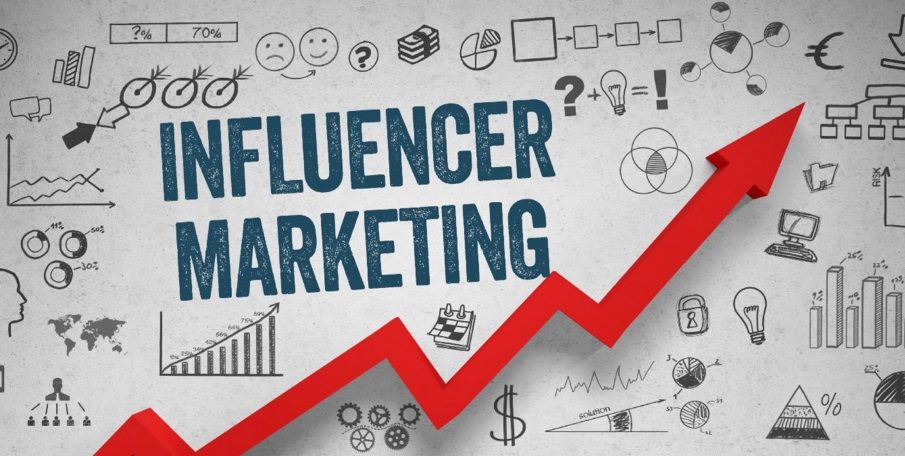Emerging Tools for Influencer Marketing Used by Top Companies

Influencer marketing has evolved from a niche strategy to a central pillar of many businesses’ digital marketing strategies. Top companies across the globe are increasingly investing in influencer collaborations, not only for product promotion but also for building deeper, more authentic connections with their target audiences. As the influencer landscape continues to grow, so too does the need for companies to leverage advanced tools to streamline campaigns, measure performance, and refine their influencer partnerships.
In this article, we explore some of the emerging tools that have reshaped the influencer marketing industry and are now being used by top companies to drive success. From influencer discovery platforms to data analytics and campaign management solutions, these tools are empowering businesses to take their influencer marketing strategies to new heights.
1. Influencer Discovery Platforms
Finding the right influencers for a brand is one of the most critical aspects of influencer marketing. Historically, brands relied on manual research or used agency services to identify influencers who matched their values, aesthetics, and target audience. However, with the advent of specialized influencer discovery platforms, the process has become significantly more efficient.
Platforms like Upfluence, Heepsy, and Influencity are revolutionizing the way companies discover and evaluate influencers. These tools aggregate data from social media platforms to provide brands with in-depth profiles of influencers across various niches. This enables companies to filter potential partners based on parameters such as engagement rates, follower demographics, geographic location, content type, and even past brand collaborations.
For example, Upfluence allows brands to track influencers’ historical performance data, such as content engagement and ROI from past campaigns, making it easier to find influencers whose audience aligns with the brand’s values. This personalized approach reduces the risk of wasted marketing budgets on influencers who fail to connect with the intended audience. By utilizing these platforms, top companies can target the right influencers more strategically, leading to higher-quality partnerships and more impactful campaigns.
2. Influencer Relationship Management (IRM) Tools
As influencer marketing scales up, managing relationships with multiple influencers becomes increasingly complex. Enter Influencer Relationship Management (IRM) tools like Traackr, AspireIQ, and GRIN, which help brands streamline influencer outreach, collaboration, and campaign management.
These tools provide a centralized platform where brands can manage every aspect of their influencer campaigns, from initial contact to final reporting. They allow companies to track ongoing communication, monitor influencer deliverables, and even manage payments and contracts—all in one place.
GRIN, for example, integrates with e-commerce platforms like Shopify and WooCommerce, enabling companies to seamlessly track influencer-driven sales and calculate ROI in real-time. For top companies running large-scale influencer campaigns, IRM tools are indispensable for ensuring that influencers meet deadlines, deliver high-quality content, and stay on brand.
Moreover, these tools often come with a built-in CRM (Customer Relationship Management) system, allowing brands to nurture long-term relationships with influencers. Influencers become more than just one-off collaborators—they evolve into brand advocates, which fosters long-lasting loyalty and an enduring partnership.
3. Social Listening and Monitoring Tools
One of the keys to measuring the success of an influencer marketing campaign is understanding how the influencer’s content resonates with the audience. Social listening and monitoring tools have emerged as indispensable resources for companies looking to track the performance of influencer-driven content across various platforms.
Tools like Brandwatch, Hootsuite, and Sprout Social allow businesses to monitor mentions, sentiment, and engagement surrounding their influencer campaigns. By tracking specific hashtags, keywords, and even brand mentions, companies can get a clearer picture of how an influencer’s audience perceives their brand.
Brandwatch, for instance, uses AI and machine learning to analyze sentiment and predict trends, providing companies with deep insights into how their campaign is performing. It also allows brands to track competitor activity, making it easier to identify new opportunities and refine influencer partnerships. For top companies, the ability to monitor real-time data and make adjustments to ongoing campaigns ensures that resources are being effectively utilized.
Additionally, monitoring tools help companies track the broader conversations happening around their brand. This not only allows for quick responses to customer concerns but also helps businesses stay ahead of potential PR crises that could arise from influencer collaborations.
4. Data Analytics and Performance Measurement Tools
In the past, it was challenging to accurately measure the ROI of influencer marketing campaigns. Metrics like likes and comments could be useful, but they didn’t tell the whole story. Today, sophisticated analytics tools have emerged to provide brands with a more comprehensive understanding of campaign performance.
Klear, Mediakix, and Fohr are among the top analytics tools used by businesses to measure influencer effectiveness. These platforms track key performance indicators (KPIs) such as engagement rates, conversions, sales, and even brand awareness. By integrating data from influencers’ social media profiles, brands can assess the true impact of their campaigns.
Klear, for example, provides advanced analytics on how influencers’ posts translate to website traffic and sales, offering a much clearer picture of ROI. These tools allow businesses to track specific campaign metrics such as how many people clicked through to the website from an influencer’s post or how many sales were generated through a unique discount code.
Data-driven insights also help companies refine their strategies for future campaigns. They can identify which types of influencers deliver the highest ROI and fine-tune their approach to content creation. With these tools, businesses are empowered to make more informed decisions, reducing the risk of ineffective collaborations and improving overall campaign performance.
5. Content Collaboration and Workflow Tools
Creating high-quality content that aligns with both the brand’s message and the influencer’s personal style is essential for the success of any influencer marketing campaign. This is where content collaboration and workflow tools come in handy. Platforms like Trello, Asana, and CoSchedule have become popular among companies managing influencer campaigns.
These tools help brands streamline content creation by offering collaborative spaces for planning, scheduling, and editing content. They facilitate the approval process, making it easy for brands to review influencer content before it goes live. Tools like CoSchedule also integrate with social media platforms, allowing companies to schedule posts directly and track campaign timelines.
For example, Asana provides project management features that help brands keep track of deadlines, manage influencer deliverables, and coordinate between teams. By setting clear tasks and deadlines for each influencer, companies ensure that content is delivered on time and to the required standard.
In a fast-paced digital world, where content can easily get lost in the shuffle, these tools are essential for ensuring smooth communication and workflow between influencers and brands, making campaigns more efficient and successful.
6. Influencer Payment and Contract Management Tools
Paying influencers on time and ensuring that all contractual obligations are met are critical aspects of maintaining professional relationships. Traditional payment methods, like wire transfers and checks, can be time-consuming and inefficient, particularly when dealing with multiple influencers. Fortunately, emerging payment and contract management platforms like Tipalti, PayPal for Business, and Boodle are changing the game.
These tools streamline influencer payments by automating invoice submissions, processing payments, and ensuring that influencers are compensated fairly and on time. Tipalti, for instance, supports global payments, making it easier for brands to collaborate with international influencers without worrying about currency conversion or transaction fees.
Moreover, these platforms often integrate with influencer marketing management systems, allowing for seamless contract signing, performance tracking, and payment processing. By automating these administrative tasks, brands can focus more on strategy and creativity, while also ensuring compliance and reducing the potential for human error.
7. AI-Powered Influencer Matching Tools
The emergence of artificial intelligence has taken influencer marketing to the next level. AI-powered tools like Influence.co, Traackr, and Socialbakers offer highly sophisticated influencer matching algorithms, which use machine learning to predict the best-fit influencers for a brand’s campaign.
By analyzing an influencer’s content style, audience demographics, and engagement metrics, these tools can match brands with influencers whose values align with their own, ensuring that partnerships feel authentic and relevant. AI-powered influencer matching tools significantly cut down the time spent manually searching for influencers and increase the chances of forming successful, long-term collaborations.
Moreover, these tools continue to evolve, becoming more accurate over time as they analyze vast amounts of influencer data. For companies looking to leverage AI for their influencer marketing strategies, these platforms provide a cutting-edge solution for identifying top influencers quickly and efficiently.
Conclusion
As influencer marketing matures, so too do the tools that help brands optimize their campaigns. From influencer discovery platforms to data analytics tools and payment solutions, the emerging technologies in influencer marketing are empowering companies to run more efficient, scalable, and measurable campaigns. These tools not only help brands connect with the right influencers but also enable them to manage relationships, measure performance, and improve collaboration with ease.
For top companies looking to stay ahead of the competition, adopting these advanced tools is no longer a luxury—it’s a necessity. By leveraging the power of technology, brands can elevate their influencer marketing strategies, creating campaigns that resonate with their audiences and deliver tangible business results.







